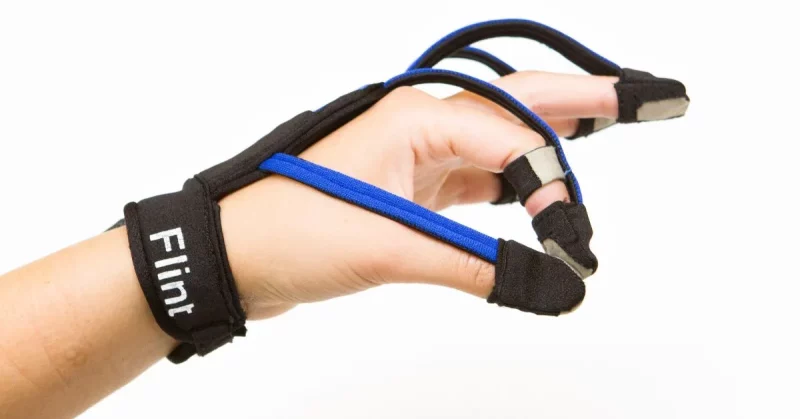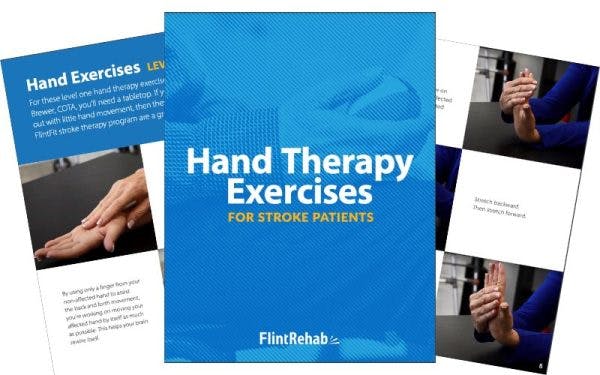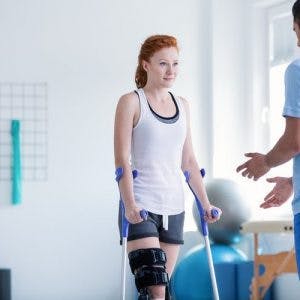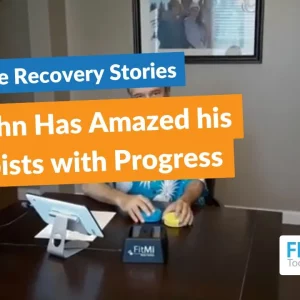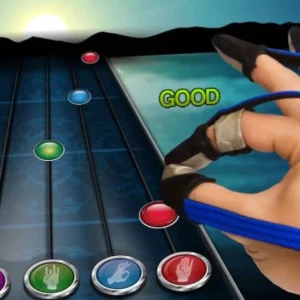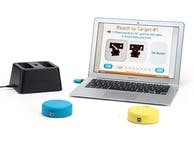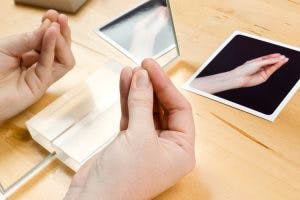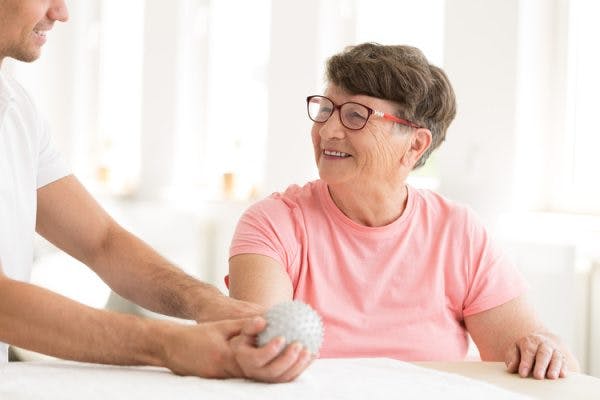A stroke can significantly affect the hand and fingers, making everyday tasks like buttoning a shirt or holding a cup difficult. Regaining finger mobility and control takes time, but with consistent effort and the right exercises, many stroke survivors can make meaningful improvements.
In this article, we are going to take a look at a variety of finger exercises that can help your post-stroke recovery. Specifically, we will cover general finger exercises for stroke patients, finger extension exercises post-stroke, and music-based finger exercises to support neuroplasticity!
Why Finger Exercises Matter After Stroke
Many stroke patients struggle with hand and finger movement following a stroke. That is because the brain controls finger movement through a network of neurons that can be damaged during a stroke. As a result of this damage, stroke patients may experience hand weakness, poor coordination, sensation deficits, and/or spasticity (involuntary muscle tightness). In some cases, the fingers may curl into the palm or resist movement entirely.
Using targeted finger exercises post-stroke can help retrain the brain and body to work together again. The goal of these exercises is to activate neuroplasticity — the brain’s ability to rewire itself and form new connections — through controlled, repetitive movement. Over time, this can improve voluntary finger movement, strength, and dexterity.
Let’s take a look at some of the best finger exercises for stroke patients to regain function!
Finger Exercises to Regain Function After Stroke – Simple Exercises for Patients with Limited Movement
For those in early recovery or with limited hand function, it’s best to begin with simple movements. Below are foundational stroke finger exercises that focus on mobility, control, and sensory feedback.
1. Finger Taps
To begin, rest your hand flat on a table (palm up) with your fingers comfortably spread. Then, one at a time, tap each fingertip to your thumb, forming an “O” shape with each connection. Move slowly and with intention, focusing on accuracy rather than speed. If your fingers feel stiff or weak, assist the movement with your other hand.
This exercise, called finger-thumb opposition, may seem simple, but it plays a powerful role in rebuilding fine motor control and is essential for regaining a functional grip. Whether you’re holding a pen, zipping a jacket, or picking up coins, this movement lays the groundwork for nearly every type of hand coordination. Practicing it regularly helps improve dexterity, precision, and hand flexibility.
2. Squeeze and Release
Grab a soft stress ball, therapy putty, or even a rolled-up sock. Begin by squeezing the object firmly with your entire hand, then slowly release your grip until your hand is open again. Repeat this motion, focusing on making the release just as controlled as the squeeze. If necessary, assist the opening motion with your other hand to reduce strain.
This exercise is valuable for improving grip strength—important for carrying, grasping, and stabilizing objects. But perhaps even more importantly, it helps retrain the hand to release its grip smoothly, which can be especially difficult for those dealing with muscle tightness or spasticity. Practicing this controlled release can make everyday tasks less frustrating and more manageable.
3. Finger Walking
Place your hand flat on a table with fingers spread slightly apart. Then, using one finger at a time, “walk” your hand forward across the surface. Begin with the index finger, followed by the middle, ring, and pinky, repeating the pattern in a smooth rhythm. For added challenge, try walking your fingers sideways or backward once you’re comfortable with the forward motion.
Finger walking is a great way to improve coordination, rhythm, and range of motion. It mimics the natural movement patterns used in activities like keyboard typing, playing musical instruments, or buttoning a shirt. Even though it’s simple, this exercise can reawaken the brain-to-finger connection and make fine motor tasks easier over time.
4. Sensory Re-education
Some individuals experience limited sensation or numbness/tingling in one (or occasionally both) of their hands after stroke. Sensory re-education exercises can help with this by using various textures to stimulate the nerves responsible for sensation.
Try gently rubbing something soft, such as a fleece blanket, along the affected hand while imagining what that material should feel like. Progress to different textures, such as a cotton t-shirt, a washcloth, or even lotion to encourage the return of sensation to the hand. This can also help with decreasing sensitivity to certain textures.
Finger Extension Exercises Post-Stroke
Finger extension can be particularly challenging after a stroke, especially if the hand remains clenched or curled. The muscles and tendons responsible for finger extension are typically not nearly as strong as the finger flexors to begin with. Therefore, it can be especially challenging to regain finger extension strength. The following exercises focus on stretching and activating the muscles that straighten the fingers.
1. Assisted Finger Extensions
Begin by placing your affected hand on your lap or a flat surface. With your unaffected hand, gently straighten each finger on the affected hand, one at a time. Hold each stretch for 5 to 10 seconds, then relax and repeat. Move slowly and stop if you feel any pain—this should be a gentle, supportive stretch, not a forced one.
This exercise helps reduce stiffness in the hand and encourages the brain to relearn how to open the fingers. It’s especially useful early in recovery or for individuals with limited voluntary movement. Even if you can’t open your fingers on your own yet, this assisted motion can help activate the right neural pathways and prevent muscles from tightening into a curled position.
2. Rubber Band Resistance
Wrap a medium-strength rubber band around all five fingers and your thumb, positioning it near the base of the fingers. Slowly open your hand against the resistance of the band, spreading your fingers apart as much as you can, then return to the starting position with control. Repeat several times, aiming for smooth, steady movement.
Using resistance like a rubber band is a great way to strengthen the extensor muscles responsible for opening the hand. This exercise also counteracts spasticity, which can cause the hand to involuntarily clench. By regularly practicing controlled extension, you help restore balance between the muscles that close and open the hand.
3. Flat Hand Presses
Place your palm flat on a table or other firm surface, making sure your fingers are relaxed and spread naturally. Gently press your entire hand down into the surface, focusing on flattening the palm and extending the fingers outward at the same time. Hold the stretch briefly, then release and repeat.
Flat hand presses are excellent for improving both finger extension and hand flexibility. This movement encourages full contact with the surface, which increases range of motion and helps retrain the hand to open more fully. It’s also a useful stretch to reduce tightness and promote better alignment of the fingers.
4. Finger Lifts with Wrist Support
Rest your forearm on a table so your wrist is supported and stable. Keeping your palm facing down and your hand relaxed, try lifting each finger individually as high as you can while the others stay flat. Take your time with each finger, and use your unaffected hand for gentle assistance if needed.
This exercise helps isolate the finger extensors, which can be difficult to activate after a stroke. Because your wrist stays still, the focus remains solely on the muscles that lift the fingers. Over time, this movement helps improve independence of each finger and rebuilds strength for tasks that require an open hand or finger coordination.
Finger Exercise with Music for Stroke Patients
Music-based therapy offers a unique way to support recovery, especially when it comes to finger mobility. Engaging with rhythm and melody can stimulate different areas of the brain, which can enhance motivation and improve outcomes.
The Benefits of Rhythm and Repetition
Repetition is a key driver of neuroplasticity which as we mentioned is the brain’s ability to rewire and form new connections.
Music naturally incorporates both rhythm and repetition which help guide movements and make exercises easier to follow. In addition, finger exercises done to a beat can feel more purposeful and less like a chore which makes adherence to stroke recovery easier.
Let’s take a look at several finger exercises for stroke patients that incorporate music.
Finger Exercises for Stroke Patients With Music
Rhythmic Tapping
Choose a metronome app or play a favorite song with a steady, easy-to-follow beat. As the music plays, tap each finger in time with the rhythm—either on a tabletop or by touching each fingertip to your thumb in sequence. Start slowly, and once you feel comfortable, try matching the tempo of different songs or switching fingers more quickly.
This exercise combines repetition with rhythm, which can be especially effective for stroke recovery. The steady beat acts as a guide for timing your movements, helping you build coordination and precision. Plus, following music makes the activity more engaging and can reduce mental fatigue during practice.
Air Piano
Picture a piano keyboard floating in front of you and “play” along with a song you enjoy. Move your fingers as if you’re pressing real keys, one at a time and in rhythm with the melody. Even if your fingers don’t fully extend or your hand feels stiff, the goal is to get each finger moving independently and intentionally.
This imaginative exercise is great for promoting finger isolation and fine motor control. It also encourages a connection between movement and music—two areas of the brain that can support each other during stroke recovery. You don’t need perfect technique—just focus on motion, rhythm, and staying relaxed.
Drumming on Surfaces
Start by resting your hand on your lap, a table, or even a pillow. Lightly drum your fingers, either one at a time or in patterns, following the rhythm of a song or beat. As you improve, try varying the tempo, increasing the speed, or creating more complex patterns.
Drumming is a playful yet powerful way to build finger strength, timing, and coordination. It also encourages fluid movement and sensory feedback, which can help reconnect your brain to your hand. The act of responding to music makes the practice more dynamic—and may even lift your mood along the way.
MusicGlove: A Game Based Option for Finger Exercises With Music
One of the most innovative tools available for finger rehabilitation after stroke is the MusicGlove—an FDA-listed device specifically designed to make hand therapy more engaging and effective. It pairs a sensor-equipped glove with interactive music-based games that guide users through repetitive gripping and tapping movements. As the music plays, users are prompted to press specific buttons in time with the beat, turning each movement into part of a fun and motivating rhythm-based activity.
The MusicGlove targets several key areas of hand recovery. It helps improve grip strength, fine motor coordination, reaction time, and overall finger dexterity. Because the exercises are structured like a game, users often stay more motivated and consistent with their therapy—both of which are critical for long-term improvement.
Clinical studies have shown that using the device for just two weeks can lead to measurable improvements in hand function. Whether used in a clinic or at home, the MusicGlove offers a convenient and science-backed way to retrain the brain through music and movement.
Tracking Progress with Your Finger Exercises and Staying Motivated
It’s normal for improvements to feel slow at times. Setting small, achievable goals can help maintain motivation. Consider keeping a journal or log to track:
- Which exercises you performed
- How many reps you completed
- What felt easier (or harder) than before
- Any noticeable improvements in daily activities
You might also take short videos every couple of weeks to visually track your finger mobility. Those working with an occupational therapist may receive even more feedback, as they have tools that can accurately assess measurable functions, such as range of motion, grip and pinch strength, and coordination. Even subtle changes can become clear when you look back. Remember, when it comes to improvement, consistency is key!
Encouraging Neuroplasticity Through Finger Exercises After a Stroke
Neuroplasticity is the brain’s ability to reorganize itself after injury. Finger exercises are one of the most direct ways to activate this process. Each time you practice a movement—no matter how small—you help strengthen a new connection in the brain.
Some principles that support neuroplastic recovery:
- High repetition: Do the same movement many times to reinforce the pattern.
- Task-specificity: Practice real-life skills you want to regain.
- Attention and focus: Stay mentally engaged while performing the exercise.
- Motivation: Enjoyable activities like music therapy or games increase adherence and results.
Final Thoughts on Finger Exercises Post-Stroke
Finger and hand recovery after stroke can feel slow and challenging, but it’s entirely possible with consistent effort and the right exercises. Start where you are, celebrate every small improvement, and remember that each movement is a step forward. Whether you’re doing simple stretches, tapping to music, or using therapy tools like the MusicGlove, you’re actively helping your brain and body reconnect.
Keep at it. The progress may be gradual, but it’s real—and often, it’s the daily habits that build lasting change.

